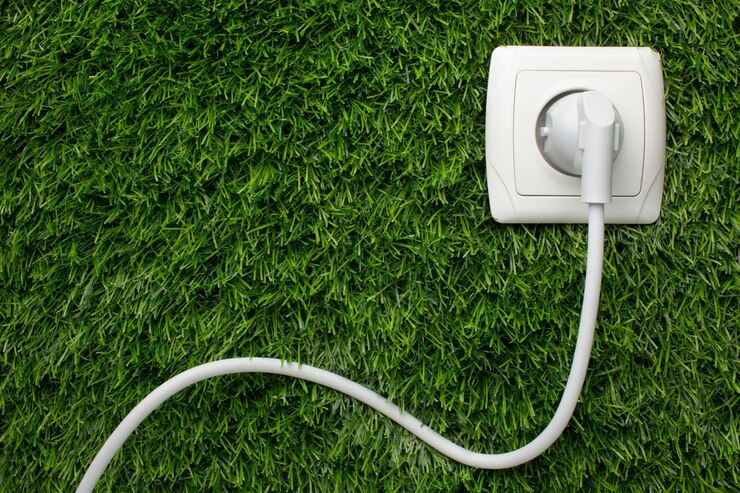Cold weather can be highly punitive and may not spare your electrical cords when using them outside.
Most cords may become brittle and prone to cracking in cold weather exposure, compromising their functionality while predisposing you to dangerous electrical shocks. That might leave you wondering whether or not outdoor extension cords specifically designed to withstand cold weather exist.
Outdoor extension cords can optimally operate in cold weather and power your equipment without glitches. Unlike the typical indoor types, these extension cords have physical adaptations that give them the resilience to brave extreme weather.
But what are these outdoor extension cords, and how well adapted are they to withstanding such extreme weather conditions? Please read on to learn more about outdoor cold-weather-adapted extension cords in this article.
What are Cold-Weather-Adapted Extension Cords?
The extension cords, suited to withstand outdoor conditions and frigid weather, have specific enabling features that regular indoor types may not have. An excellent outdoor extension cord adapted to cold weather can withstand temperatures up to -58 Fahrenheit without compromising functionality.
Most outdoor extension cords also have proper insulation mechanisms that resist condensation, which could be risky during handling. Besides, they’re more durable, and although they may fetch marginally higher prices, they can be a worthy investment for every household.
These extension cords help power outdoor appliances and equipment, such as electric drills and mows, allowing you to operate them throughout the year.
Features of Extension Cords Designed For Cold Weather

Outdoor extension cords adapted for cold weather have a few distinct features that give them the ability to handle compromising conditions, including the following.
1. Flexible Insulation
Extreme cold has its way of stiffening materials, and extension cords aren’t an exception. Instead, like every material, they harden and become brittle when temperatures fall below specific thresholds. With flexible insulation, these extension cords can remain functional, meeting your power supply needs.
Sought-after insulating materials include thermoplastic elastomers (TPE) and polyvinyl chloride (PVC). Besides, rubber and neoprene can withstand icy conditions by remaining flexible and allowing bending around corners and obstacles effortlessly. These materials barely stiffen and are durable; hence, they can be ideal picks.
2. Freeze-Thaw Connections
Cold weather conditions can lead to material contraction, and connectors must resist such changes to allow for easy use. As freezing temperatures alternate with standard or high temperatures, the freeze-and-thaw action occurs, altering prong and plug dimensions by tiny margins. These changes can make using your extension cord incredibly challenging.
Freeze-thaw connectors incorporate thermoplastic materials like impact-resistant nylon and polypropylene. These materials are usually less prone to becoming brittle or stiff in cold temperatures.
3. Heavy-Duty and Quality Construction
Unlike regular indoor extension cords, those adapted to cold outdoor conditions feature heavy-duty chassis designs. They use materials with reinforced strain relief and undergo weatherproofing for water and ice infiltration resistance.
The heavy-duty connectors also have reinforced blades and housing; some may have soldered or crimped connections to guarantee longevity. Besides, their construction utilizes high-grade aluminum or copper conductors for efficient electrical conductivity should temperatures drop.
4. Weather Resistant Jacket
Extension cord jacketing provides a protective covering for its internal components against extreme cold. This sheath is weather-resistant and made from durable and flexible materials for longevity in service and durability. It features a sealed construction, allowing no moisture, ice or mist to penetrate that could otherwise cause dangerous electric shocks.
Safety Considerations for Using Outdoor Extension Cords
For your peace of mind, it’s crucial to understand how cold-weather extension cords adapt to extreme temperatures. However, it’s even incredibly essential to know your way around safely using them to avoid the predisposition to fatal electric shocks.
Below is how to guarantee safety when using outdoor extension cords for your powering needs.
1. Inspect Your Cord
Always inspect your extension cord after ascertaining it has every feature adapted to withstand cold outdoor weather conditions without compromising efficiency.
Some extension cords may come with cuts and openings or exposed wires and fraying that can predispose you to electric shocks. That could pose a life-threatening risk or long-term injury.
2. Proper Placement
Avoid placing your extension cord under carpets, leading to overheating and possible fires. Besides, it’s prudent to avoid placing them in high-traffic zones that could expose them to potential physical damage, exposing wires and causing dangerous electric shocks.
3. Avoid Overloading
Overloading electric extension codes means plugging in devices with higher demands than their maximum wattage. That can be dangerous, especially in cold conditions where conductive efficiency may slightly reduce, making it unable to meet such high power supply demands.
As a result, overloading your outdoor extension can lead to fires that can be challenging to control.
4. Use Ground Fault Circuit Interrupters
Consider using UFCI-equipped cords outdoors since they can prevent electric shocks due to ground faults. Such can be expected during cold weather, leading to dangerous and life-threatening situations.
5. Avoid Overstretching
Overstretching your extension cords over an extended span can cause unnecessary tension that could weaken insulating materials. That can lead to tears and damage, exposing wires that may cause life-threatening electric shocks.
6. Unplug Your Extension Cord When Not in Use
It’d help if you never left your outdoor extension cord plugged in when not using it. That’s essential to help you avoid exposing it to elements like water or accidentally knocking it around when an electric current actively runs through it.
Bottom Line
Outdoor extension cords for cold weather exist and can be a much-needed convenience to your power supply needs regardless of the weather. Unlike conventional ones, these extension cords have specific enabling features for withstanding punitive cold weather conditions.
Understanding the safety measures when handling these extension cords is prudent to avoid electric shocks and other accidents like tripping and falling as wires lay around your compound.
Additional:
- What is a Landing page?
- What Is A Dofollow Link And Nofollow Link
- How To Change Country In Google Play Store?

